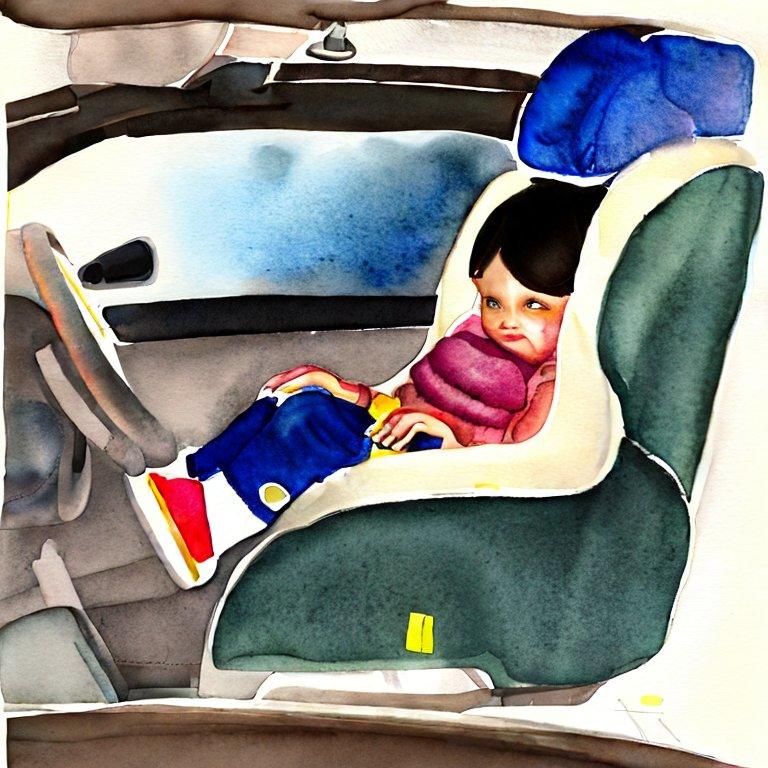As a parent, your child's safety is always your top priority, especially when you're on the road.
One important safety measure that you can take is to ensure that your child is seated properly in the car, using the appropriate car seat or booster seat. Boosters are specifically designed for big kids, and they play a critical role in keeping children safe during a car ride. In this article, we'll discuss the importance of boosters and provide you with helpful tips on how to ensure that your child is safely seated in the car.
Why Your Child Needs a Booster Seat
Most kids need to use a booster seat from around age 4 until they're 10-12 years old. This is because children at this age are usually not yet big enough to use a safety belt without a booster. So, how do you know if your child needs a booster seat? One simple test you can do is to check if your child meets the following criteria:
- Does the child sit all the way back against the auto seat?
- Do the child's knees bend comfortably at the edge of the auto seat?
- Does the belt cross the shoulder between the neck and arm?
- Is the lap belt as low as possible, touching the thighs?
- Can the child stay seated like this for the whole trip?
If you answered "no" to any of these questions, then your child needs a booster seat. Booster seats help to ensure that both the lap belt and shoulder belt fit your child properly, providing them with the best possible crash protection. Plus, your child will be more comfortable during the car ride.
When Should Your Child Stop Using a Booster Seat?
Many parents wonder when their child can stop using a booster seat. It's important to note that vehicle seats and belts are designed for adult bodies, so children who have outgrown a safety seat with a harness will still need a booster seat to keep the lap belt on their upper thighs and the shoulder belt centred on their shoulder and chest. Most children will need to use a booster seat until they're 10-12 years old. Even if your child is eight years old, they're still not old enough to use a regular safety belt without a booster.
How to Ensure Your Child is Safely Seated in the Car
To ensure that your child is safely seated in the car, you should follow these helpful tips:
-
Use the appropriate car seat or booster seat for your child's age, weight, and height. Be sure to check the weight limit on the labels or in the instruction booklet, and make sure that your child's shoulders are at or below the top strap slots.
-
All children should ride in the back seat until they're ready to drive. It's twice as safe as the front seat.
-
Never use a booster with only a lap belt! Although two shoulder belts have been required in vehicle back seats since 1989, many families have cars with lap-only belts in the centre or older cars with no rear shoulder belts. With the wide variety of products with harnesses certified above 40 lbs. now available, there are excellent options for lap belt only locations.
-
Ensure that the shoulder belt crosses the centre of your child's shoulder and chest, while the lap portion of the belt should be low and snug, crossing the hip bones or upper thighs. Check that your child's legs are long enough so the knees bend comfortably at the edge of the seat. Otherwise, the child will tend to slide forward to the edge of the seat or slouch downward, which can cause the lap belt to ride up too high.
-
Make sure your child sits up straight, with the entire back touching the vehicle seatback, and stays properly seated throughout the trip.
Conclusion
Booster seats are essential for the safety and comfort of young children in vehicles. The 5-step test is a useful tool for parents to determine whether their child is ready to use a safety belt without a booster. It is crucial to ensure that the shoulder belt and lap belt fit right for the best crash protection. Children should ride in the back seat until they are ready to drive, as it is twice as safe as the front seat. Parents should also be aware that older children have a higher rate of injury than younger ones, making booster seats necessary until age 10-12. It is important to follow these guidelines to ensure that children are safe and comfortable while riding in vehicles.











1 comment
Lameez
This very important and a must read